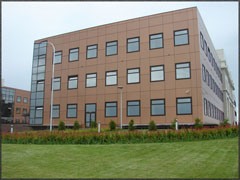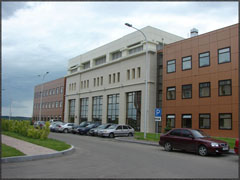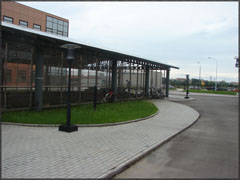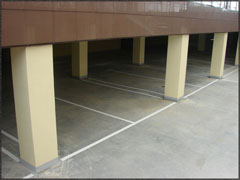Special Economic Zone "Dubna"
 The small town of Dubna is located on the border of the Moscow and Tver regions (belongs to the Moscow region). In 1956, the Joint Institute for Nuclear Research was founded here. From that moment, the city began to be considered a science city (although it received official status only in 2001).
The small town of Dubna is located on the border of the Moscow and Tver regions (belongs to the Moscow region). In 1956, the Joint Institute for Nuclear Research was founded here. From that moment, the city began to be considered a science city (although it received official status only in 2001). Dubna is a city of scientists, engineers, physicists and cyclists. What does he have to do with IT and Habr in particular?
As you know, not so long ago a special economic zone was founded in this cozy town. It was created with the aim of developing mainly IT and nanotechnology. Let's see what is happening here at the moment (in the comments you can compare this with the prospects of what will happen in Skolkovo, for example).
To become a resident of the SEZ, the company must provide some innovative project that it is going to implement. Applicant projects are reviewed 4 times a year. As a rule, everyone is welcome, so we will not dwell on this. If interested, ask questions in the comments.
What gives the company that it becomes a resident? The main plus is the possibility of renting an office in this very Special Economic Zone at a preferential price, which is 300 rubles per square meter (electricity, heating, air conditioning - all included). For non-resident companies - 900 rubles. Passive advantages: the presence of conference rooms that can be relatively inexpensive to rent; the status of a resident company, to increase credibility (for example, when participating in tenders for government orders). For employees of resident companies, some benefits are also provided, for example, a discount on the purchase of housing on credit in the SEZ. True, the houses themselves, in which housing will be sold, have not yet been built.
Here are some of the companies that work here: Ad Labs , Luxoft , Agava,Intergraphics , Progressive Media , Tech Invest , RosPartner .
At the moment, the main disadvantage is the inconvenience of travel for people. The SEZ is located on the left bank of the Volga River, and the entire developed infrastructure of the city is on the right bank. Between the banks you can only drive along an obsolete dam with a traffic light (first a cloud of cars in one direction, then in the other). Driving by car takes 15-30 minutes depending on the number of cars. By bus - 40 minutes (runs once an hour). They promised to build a bridge across the Volga, but the bridge project was frozen for an unknown time. If there was a bridge, the road would take 5-7 minutes.
A few pictures






In total, now there are 4 buildings (3 of which are almost completely packed with residents), a hotel, and also very close to a new sports complex (with a swimming pool, a gym, a mini-football / basketball court). A road to the Volga is being built from the SEZ; they are planning to start building the embankment in the near future. And this is only a small part of what was conceived in the project of the Special Economic Zone “Dubna” .
And finally, a little about the city itself. You can get to it from Moscow from the Savelovsky station (2 hours by train), from there by bus (1.5-2 hours) or by car along Dmitrovsky highway (127 km). Dubna has a population of 62,000. Dubna is surrounded by the Volga and Sister rivers, the Moscow Canal and the Ivankovo reservoir. The presence of a huge amount of trees and water makes this city one of the cleanest in the entire Moscow region.
UPD: Added video from comments: http://www.bbc.co.uk/russian/multimedia/2010/07/100720_dubna_skolkovo.shtml
